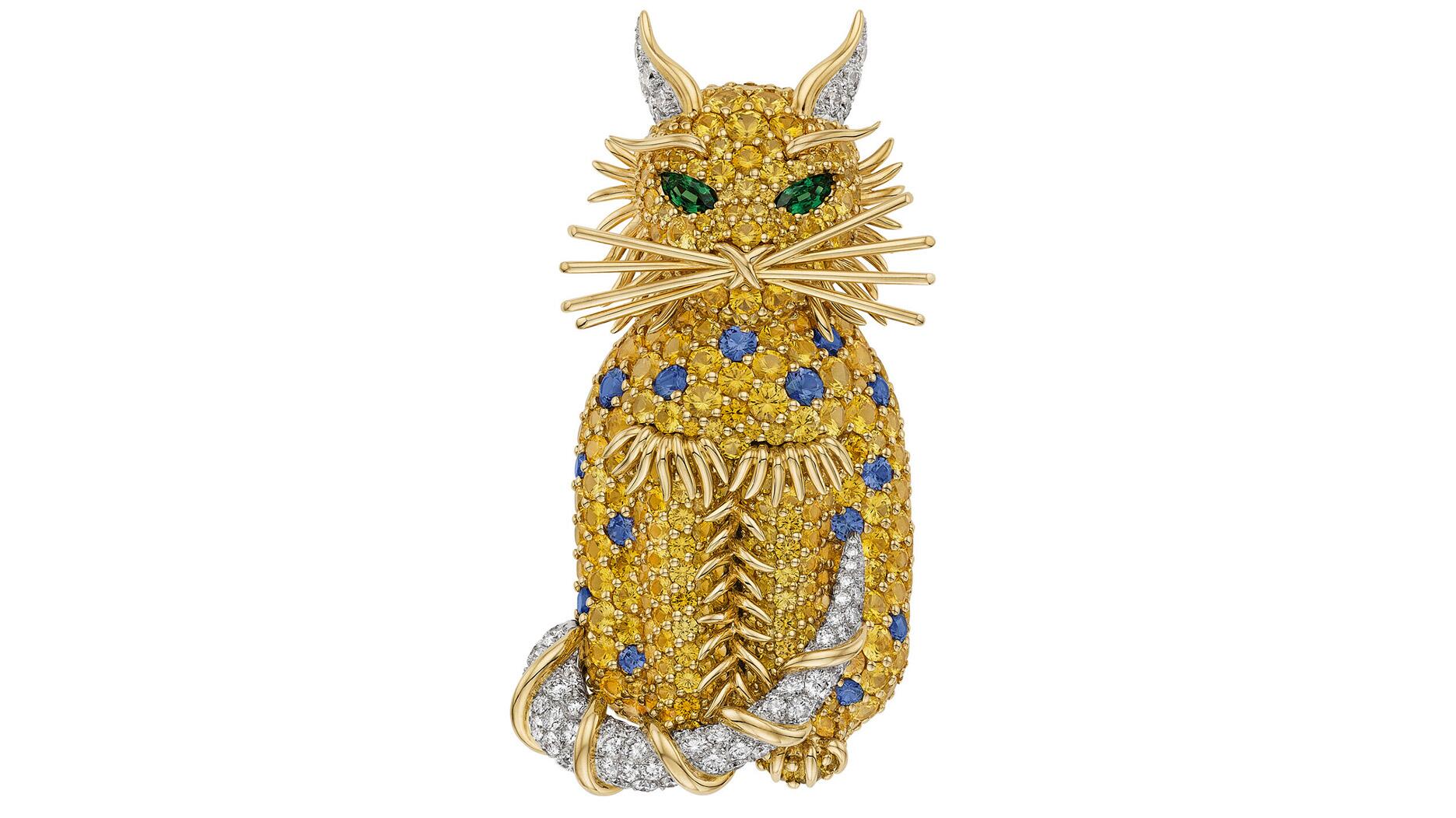The former BHP Billiton leader and Gemfields chairman is remembered for his influential leadership throughout his 50-year mining career.
6-Carat ‘Farnese Blue’ Diamond Could Garner $5.3M
The pear-shaped stone has been in the same family for more than 300 years, passing through some of Europe’s most important houses.

Geneva--A historic blue diamond that’s been in the same family for more than three centuries will hit the market for the first time this spring.
“The Farnese Blue,” a 6.16-carat pear shaped fancy dark gray-blue diamond, will be offered at the Magnificent Jewels and Noble Jewels sale at Sotheby’s Geneva on May 15, where it is expected to sell for between $3.7 million and $5.3 million.
It was uncovered in the Golconda mines of India, which also produced the famous Hope and Wittelsbach diamonds.
The stone was given to Elisabeth Farnese, Queen of Spain (1692-1766) and descendant of Pope Paul III, following her wedding to King Philip V of Spain, grandson of Louis XIV, King of France.
The wedding was celebrated in Parma, Italy in 1714, after the War of the Spanish Succession, which had depleted the country’s finances. To be able to offer a suitable dowry for the new queen, the Spanish government sent word to its colonies, demanding they send wedding presents to Madrid.
Then, in August 1715, the Golden Fleet sailed from Cuba: 12 ships carrying a fortune in gold bullion and emeralds. But after only 10 days of sailing, a hurricane destroyed most of the fleet in the gulf of Florida. Only one ship survived.
The emeralds were thought to be lost in one of the sunken ships, but one diamond made its way to Spain: a pear-shaped blue diamond, gifted to the new Spanish queen by the governor of the Philippine Islands.
For the next 300 hundred years, as Elisabeth and Philip of Spain’s descendants married, the stone was passed down through four of the most important royal families in Europe: Spain, France, Italy and Austria.
Elisabeth Farnese passed it to her favorite son, Philip (1720-1765), Duke of Parma and founder of the House of Bourbon-Parma. When he died, his son Ferdinand inherited the jewel, which then passed to his son, Louis I, made King of Etruria, during Napoleon’s invasion of Italy, followed by his grandson, Charles II, who become Duke of Lucca, following the Congress of Vienna in 1815.
Charles II had a tie-pin setting created for the stone. He abdicated in 1849 and the title of Duke of Parma passed to his son, Charles III, who was assassinated just five years later. The Farnese Blue then was inherited by Charles II’s grandson, Robert I (1848-1907), the last ruling Duke of Parma.
After the death of Robert I in 1907, his son Elias of Bourbon, Duke of Parma, inherited both the diadem and the Farnese Blue.
These jewels even have a written record of their journey, thanks to a detailed inventory of the family jewelry compiled by Maria Anna von Habsburg (1882-1940), Archduchess of Austria.
The Farnese Blue has been kept a secret by the family and family jewelers over the centuries and hidden in a royal casket.
The Latest

The LVMH-owned brand has partnered with the costume design union to revamp its award for 2026.

The luxury titan inked a deal to acquire an initial minority stake in the jewelry manufacturer with a pathway to full ownership by 2032.

How Jewelers of America’s 20 Under 40 are leading to ensure a brighter future for the jewelry industry.

The company’s curation of unsigned vintage and estate jewelry debuted at the Bloomingdale’s in Costa Mesa, California.


In the recent multi-shipment seizure, CBP also found counterfeit Audemars Piguet, Moncler, and Chrome Hearts items.

Helzberg’s Chief Retail Officer Mitch Maggart shared details about its tests of a new store concept rooted in an elevated luxury experience.

Roseco’s 704-page catalog showcases new lab-grown diamonds, findings, tools & more—available in print or interactive digital editions.

Jewelers of America execs and National Jeweler editors discuss tariffs, the sky-high gold price, and the engagement that broke the internet.

The luxury goods company said founder Ippolita Rostagno will remain at the brand’s helm.

Laura Burdese, who joined the Italian luxury brand in 2022, will take on the role in July.

The National Jeweler editors revisit the most noteworthy industry happenings and design trends from 2025.

The lab-grown diamond grower now offers custom engagement and fashion jewelry through its Kira Custom Lab Jewelry service.

Chandler got his start at Michelson Jewelers and has served as DCA president and CEO since 2001. He will retire at the end of the month.

The boutique is slated to open this week inside Terminal 8, offering pre-owned Rolex watches and more to international travelers.

Sponsored by Digital Monitoring Products

The special-edition egg pendant ingested in a New Zealand jewelry store was recovered after a six-day wait.

Associate Editor Natalie Francisco plays favorites with Piece of the Week, selecting a standout piece of jewelry from each month of 2025.

The “Love and Desire” campaign is inspired by the magic that follows when one’s heart leads the way, said the brand.

Two awardees will receive free tuition for an educational course at the Swiss lab, with flights and lodging included.

Berta de Pablos-Barbier will replace Alexander Lacik at the start of January, two months earlier than expected.

Sotheby’s held its first two jewelry sales at the Breuer building last week, and they totaled nearly $44 million.

Winners will receive free registration and lodging for its fourth annual event in Detroit.

Here are six ideas for making more engaging content for Instagram Reels and TikTok, courtesy of Duvall O’Steen and Jen Cullen Williams.

The honorees include a notable jewelry brand, an industry veteran, and an independent retailer.

Carlos Jose Hernandez and Joshua Zuazo were sentenced to life without the possibility of parole in the 2024 murder of Hussein “Sam” Murray.

Yood will serve alongside Eduard Stefanescu, the sustainability manager for C.Hafner, a precious metals refiner in Germany.



























